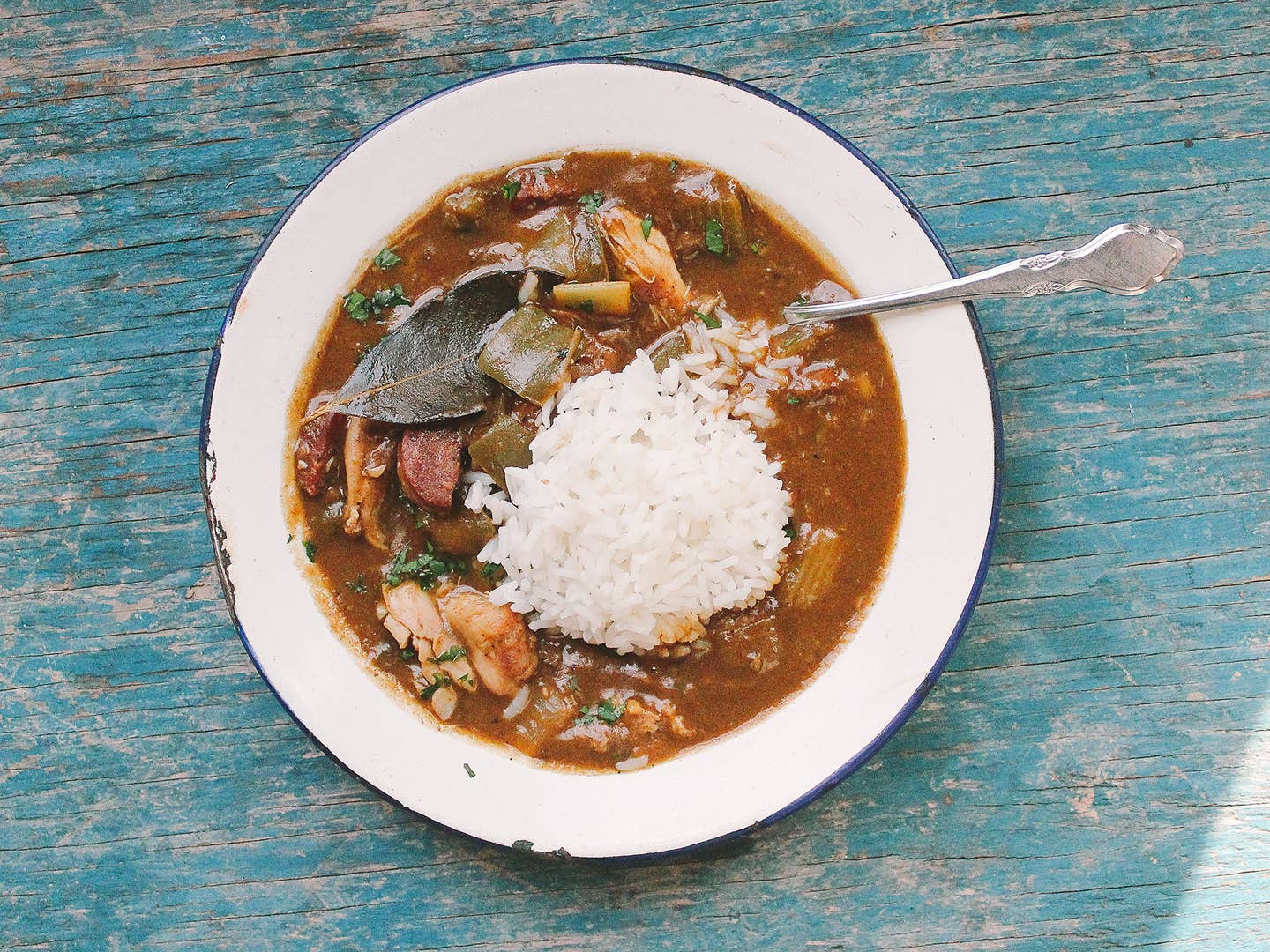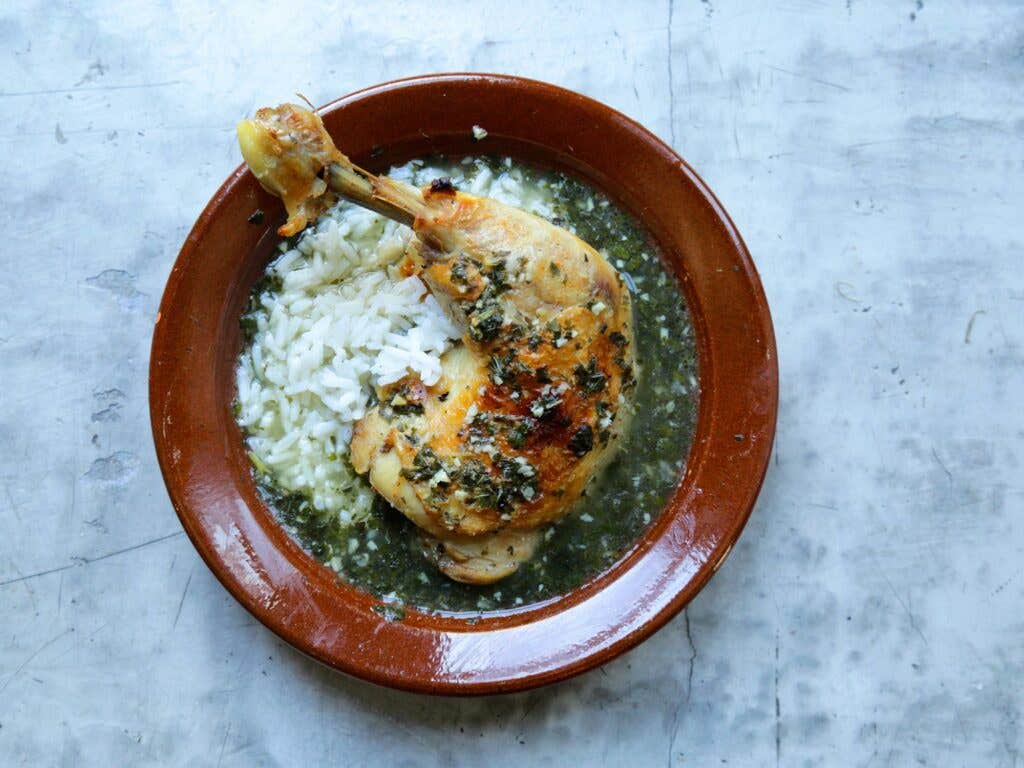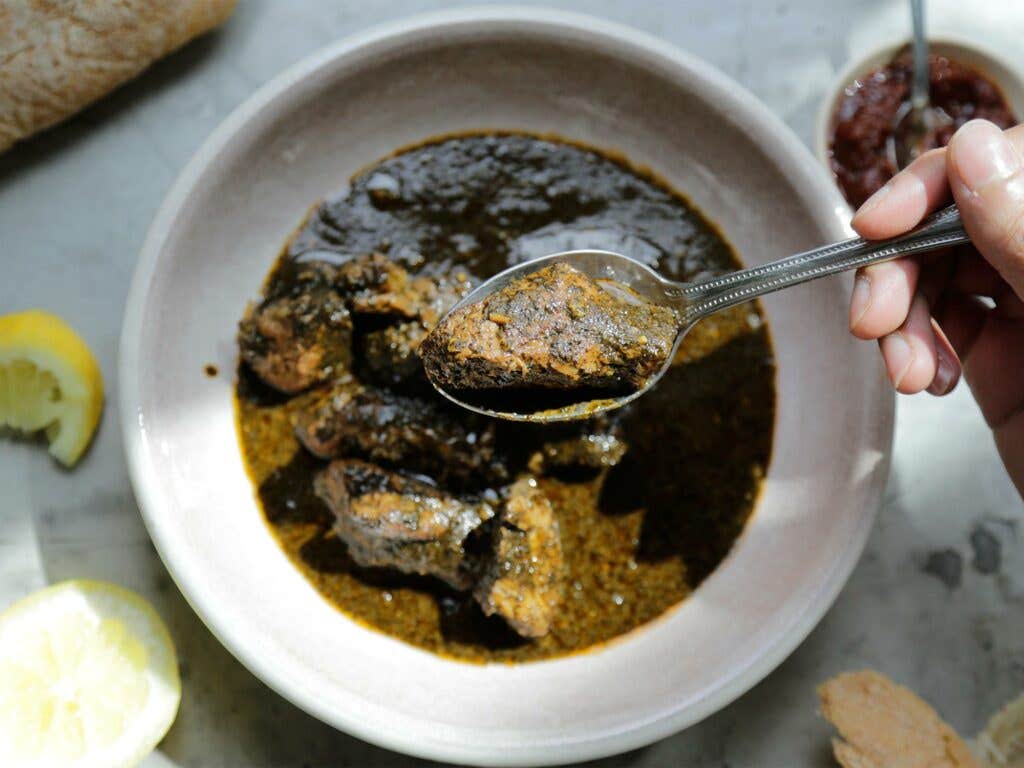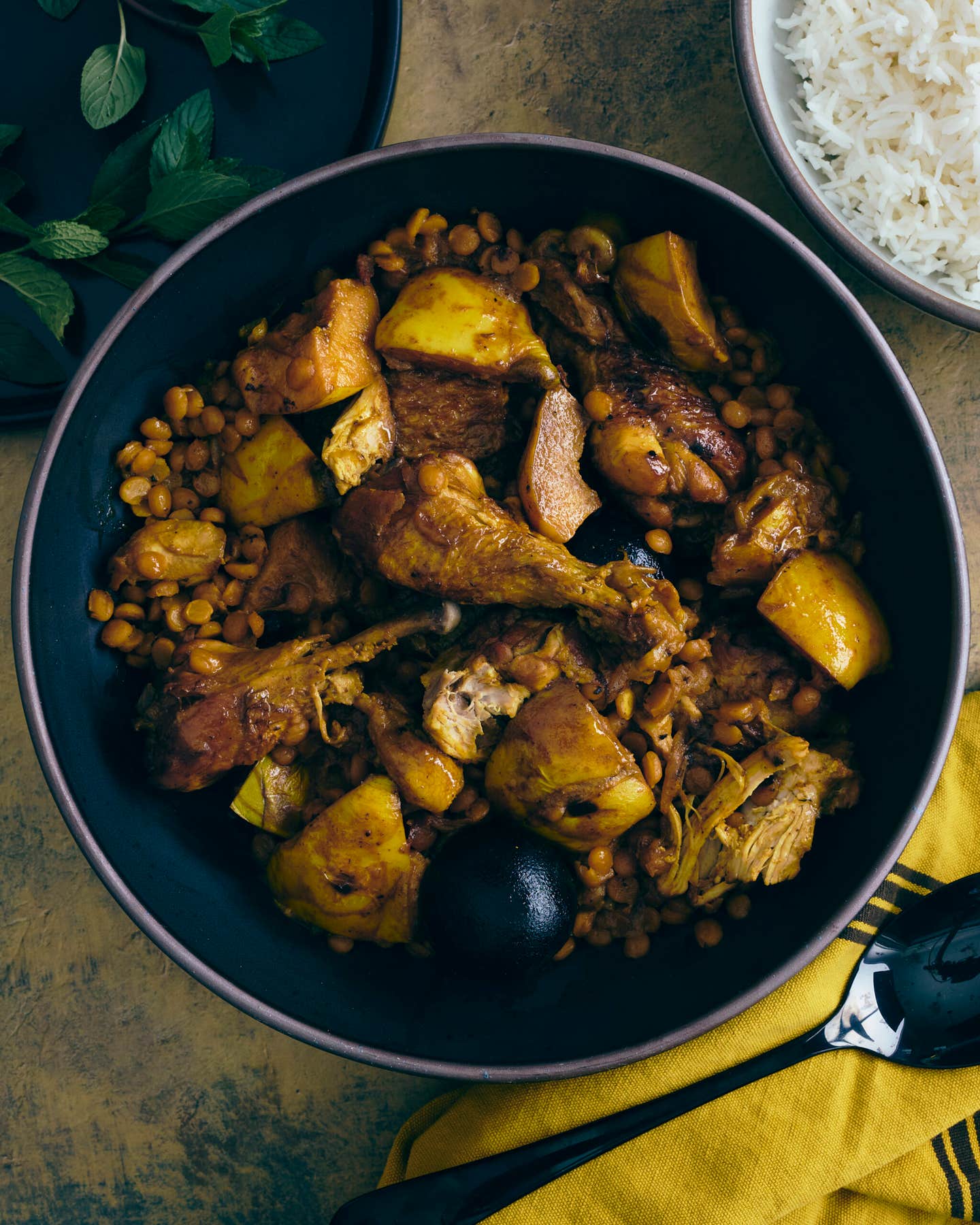
Mucilaginous Magic: The Incredible (and Incredibly Useful) Thickening Power of Nature’s Slimy Leaves
Beloved around the world, filé and molokhia add a slick, soothing texture to soups and stews worth adding to your repertoire
For the final project in my global leaf cooking tour, I had planned to focus an all-American ingredient: filé powder, dried, ground sassafras leaves.
A North America native long popular with Choctaw tribes before it was incorporated into the cornerstone of Louisiana cooking, filé is a magical thickener. When introduced to hot broth, it instantly thickens and enriches liquid to a unique slick, dare I say slimy consistency. Foods cooked to that consistency—okra, chia seeds, marshmallow root tea—have always appealed to me for their soothing, restorative effects, particularly when I'm feeling under the weather. I wanted to know how they actually worked.
The Filé Fraternity
My personal supply of filé, god-knows-how-old and languishing in the back of my spice drawer, smelled like musty nothing, so I decided to stop into one of my favorite neighborhood haunts for a fresh batch for testing. SOS Chefs is one of the culinary jewels of Manhattan; while smaller and somewhat less exhaustive than our spice megamart, Kalustyan's, SOS has a cozier and more educational feel. The staff packs their spices out into their own custom tins and customers are encouraged to open whatever they like for a sniff.
The owner, Atef Boulaabi, is ever-present, keeping enough distance to let her customers browse, but smiling and ready the second a question flashes through anyone’s eyes. Her infectious enthusiasm and encyclopedic knowledge always sells me on some pod, powder, or potion I never knew my pantry needed. When I reached for the lid of a large glass jar of moss-green powder, I figured I had found my filé.
“Ah, do you know molokhia?” Boulaabi asked.
Well, no, I certainly didn’t.
She went on to explain how sassafras is not the only leaf used to thicken restorative, stick-to-your-ribs stews. Enter molokhia, a green vegetable used across North Africa, the Middle East, and Central Asia. In Boulaabi’s native Tunisia, the powdered version is simmered with oil, spices, and stock for hours to make a thick, smooth stew. Egyptians chop fresh molokhia and cook it gently in one of that country’s most iconic dishes: a comfortingly slimy chicken stew. And in Palestinian kitchens, the fresh leaves are often left in large pieces and slowly wilted, like gooey, satiny collard greens.
Mucilaginous Magic

Leaves from the sassafras and molokhia (a.k.a., jute or Jew’s mallow) plants fall into a category of “mucilaginous vegetables.” along with okra, mâche, purslane, Nigerian waterleaf, edible succulents and cacti, and some algaes.
Small quantities of mucilage are secreted by just about all plants; the naturally occurring starchy biopolymer is essential to storing food and water, and acts as a cushion and protectant for leaves, stems, and seeds. It's the same type of material found in flax and chia seeds that makes them so great for thickening raw vegan puddings and sauces. Some edible plants have evolved to produce more mucilage than others, and the slippery, slimy veggies play a part in cuisines from all over the world.
As a dairy-free thickener, mucilage is beloved around the world, lending its soothing, silky texture to many types of dishes; several folk medicine traditions value them as aphrodisiacs and natural remedies for respiratory irritation and digestive ailments.
How to Cook With Filé and Molokhia

Molokhia is mild and rich like spinach, but with a grassy, eucalyptus, herbal aroma similar to sassafras. Filé powder, however, is more of a spice than a vegetable; its flavor is concentrated and medicinal, with a fruity, earthy bitter-sweetness. While molokhia and filé differ somewhat in their flavor and thickening ability, they are similarly sensitive to mishandling. Filé powder tends to turn stringy or “ropey” when boiled in liquid, and so it is usually served at the table, sprinkled over gumbo to gently thicken and season to taste.
James Beard Award-winning Chef Frank Brightsen, of Brightsen's in New Orleans, serves a rich, herbaceous rabbit and sausage filé gumbo, and he refers to the powder as "One of the more unique and unusual ingredients. Period."
Brightsen advises using the most freshly ground filé you can find because, "like any ingredient, once it's processed, it begins to lose its pungency. If you're lucky, you know someone who grinds fresh file in the fall, and that is incredible. The greener the filé the better. It gets kind of greyish as it ages."
In order get around filé’s fussy texture, and to fully infuse his broth with grassy, herbaceous flavor, Brightsen uses a trick learned from his mentor, Paul Prudhomme. After sweating vegetables in olive oil, and before adding any additional liquid, he adds his filé powder, sauteing it lightly to activate and then loosen the tight, gluey mucilage.
In Tunisia, too, powdered molokhia is fried in oil before adding hot stock, and then simmered for many hours or even overnight to achieve a rich and silky texture. When the leaves are used fresh (or frozen, as they are most often available in the United States), a quicker cooking time is preferred, to keep the leaves suspended in their thick and slippery broth.
Gumbo is a precious part of the North American culinary heritage because, like many of the truly great parts of our country, the recipe is an amalgam of diverse traditions and painful history. It is a quintessentially American dish, influenced by African, European, and native Choctaw cooking techniques and ingredients. The earliest versions were, according to Brightsen, thickened only by okra, a vegetable that was brought to the New World by slaves. As okra is a warm-weather vegetable, winter substitutions were needed to replicate the familiar, slimy texture still cherished as "the draw" in traditional African recipes. French-trained cooks contributed their now-essential brown roux as a heavier, toasty thickener, while Choctaw powdered sassafrass (kombo) gave gumbo's broth that prized mucilaginous quality, as well as its eventual name.
To really understand gumbo, it is necessary to honor the centuries of cooks who created it, because, as Brightsen explains, “here, in Louisiana, gumbo is not a dish, it’s an event, a reason to get everybody around the table. It’s a very humanizing and bonding sort of experience.”
I'm sure we all agree that we could do with a bit more of that these days; I'm hoping the next few slimy pots of filé gumbo and molokhia might just do the trick.


Keep Reading
Continue to Next Story










